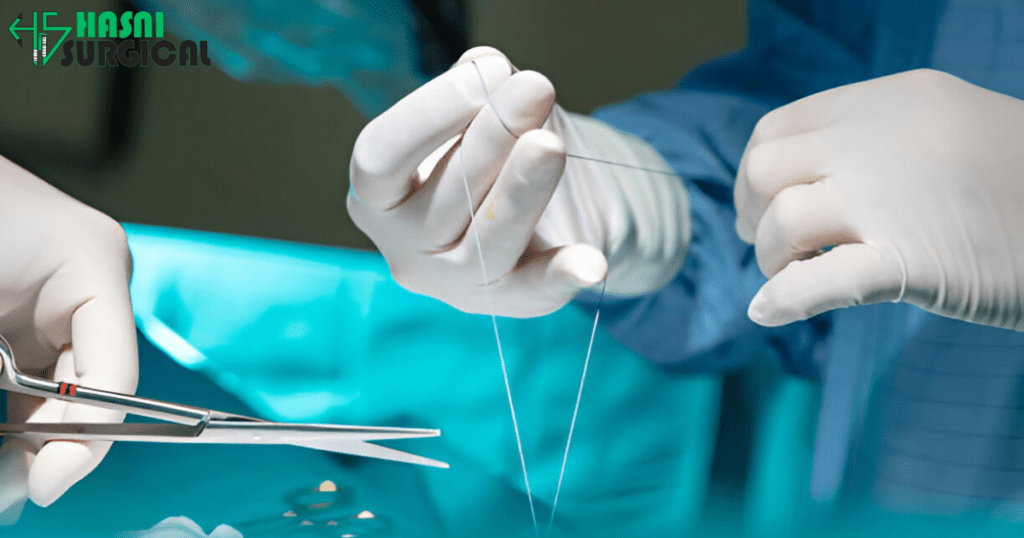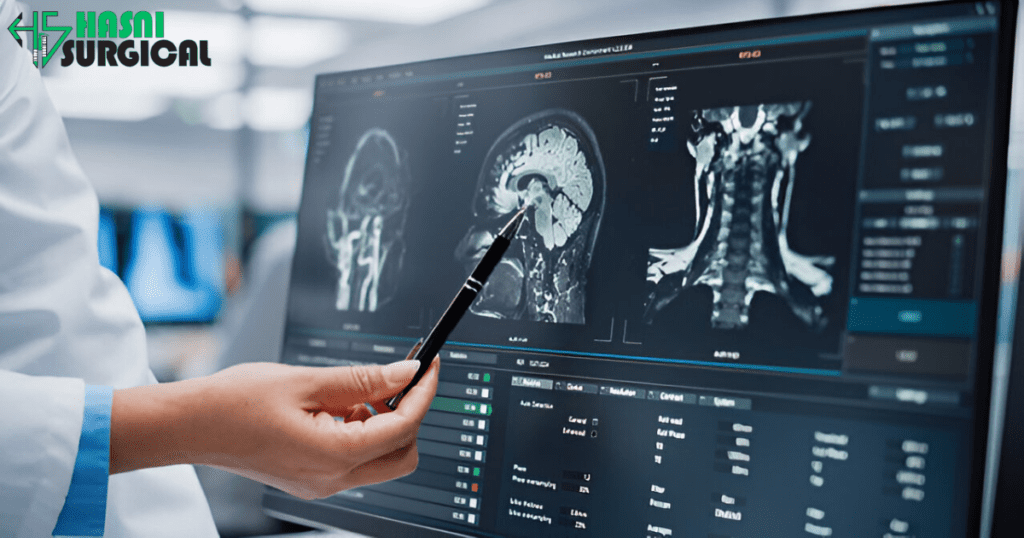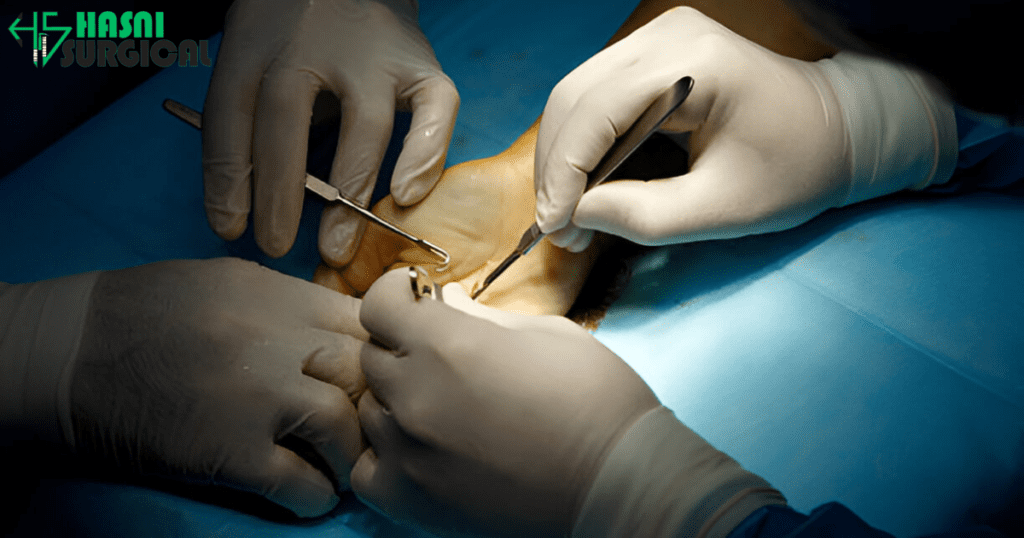6 Powerful Microsurgical Devices: Minimal Equipment, Maximum Health Benefits for Precision Care
December 21, 2024 2025-01-03 5:116 Powerful Microsurgical Devices: Minimal Equipment, Maximum Health Benefits for Precision Care

6 Powerful Microsurgical Devices: Minimal Equipment, Maximum Health Benefits for Precision Care
Contemporary medicine depends on precision care and innovative techniques, particularly in sophisticated and complex disciplines. An example of such a branch is microsurgery-an entity characterized by operations made under magnification, because the structures operated on often are tiny structures like nerves, blood vessels, or other delicate tissues.
The Microsurgical Devices have formed the heart of the medical revolution, with its required accuracy and finesse to carry out the surgeries. The devices are not only complex but very minute as well, thus letting the surgeons do the unthinkable previously.
Microsurgical Devices have greatly impacted the medical field. It has ensured that patients have a much higher chance of successful recovery, less trauma, and faster healing. Life-altering conditions that once required long recovery times or were considered inoperable are now treatable.
Apart from reconstructive surgery, microsurgical Devices plays another critical role in many more areas, such as neurosurgery, oncology, and even veterinary medicine. By the use of neurosurgical techniques involving microsurgery, doctors are in an accurate position to carry out operations within the brain and the spinal cord without damaging healthy tissues adjacent to the site.
It has given pioneering advancement in patient results through innovation technology and developed surgical skills. The field of microsurgery is constantly in evolution with new advancements and innovations in the design, materials, and techniques used in surgery. This brings about new hope for sufferers who have complex health conditions to be able to achieve full recovery and regaining a better quality life.
And that’s what microsurgery does; it is the kind of innovation that helps the boundaries of medical science move forward. Tools and techniques once thought impossible are today transforming the surgical landscape to offer new solutions for the most delicate and intricate medical challenges. With each step forward we move closer to the day of promise when every patient gets the best care conceived specifically for their needs.

Marvel of Microsurgical Devices
Microsurgery involves surgery at the microscopic level. It is mostly found in neurosurgery and reconstructive surgery and, to some extent, in microvascular surgery.
It allows doctors to work on structures a millimeter in size: capillaries, end nerve endings, and smaller bone pieces. Such manipulations require delicate but resistant tools for accuracy and minimal tissue damage.
They now manufacture modern microsurgical devices out of advanced materials, which include stainless steel, titanium, and carbon composites. Those instruments are very light but also very hard.
They made them with the most ergonomic designs to fit well on surgeons’ hands without bringing hand tremors over lengthy and complex procedures. All these things make it possible today: to reattach severed limbs; reconstruct facial features; and even to restore vision or hearing.
Important Microsurgical Devices on Health Benefits
There are a variety of specialized instruments in microsurgery, designed for specific uses:
- Microsurgical Scissors: These are extremely sharp microinstruments that cut minute tissue with minimal force and precision. They reduce the amount of secondary injury, making suturing seamless.
- Forceps: These grip or hold tiny structures, microsurgical forceps; the tips are typically very finely serrated for better grip without exertion of too much pressure.
- Microvascular Clamps: These are used to hold blood vessels in surgeries. In other words, they temporarily restrict the flow of blood so the surgeons can work on the veins and arteries without excessive bleeding.
- Needle Holders: These are used to hold needles during suturing so that stitches can be placed with the utmost precision.
- Liposuction cannulas: Although these are more commonly used in cosmetic surgery, they are an important part of reconstructive microsurgery in helping to reshape and repair tissues.
- Surgical Microscopes: Not a hand-held instrument, the surgical microscope is an essential part of microsurgery, providing magnification to visualize the minute structures being operated on.

Neurosurgery: Precision Care Meets Lifesaving Outcomes
The stakes are the highest in neurosurgery, perhaps the most celebrated field of microsurgical devices. Neurosurgeons have to navigate the labyrinth of the human brain and spinal cord to treat conditions such as brain tumors, aneurysms, and nerve damage. The precision of microsurgical devices is of paramount importance in such procedures where even a millimeter of error can be critical.
- Treating Brain Aneurysms
An aneurysm is when a vessel in the brain gets weak and balloons out. Microsurgical instruments let the neurosurgeons clip the aneurysm at its base, disturbing surrounding brain tissue. The survival procedure decreases the risk of sudden death or stroke considerably.
- Spinal Cord Repairs
Spinal cord injuries are normally followed by paralysis or loss of severe mobility. Microsurgical instruments allow the surgeon to repair damaged nerves or to remove obstructions with the least amount of damage caused, which may restore some functions and therefore enhance the quality of the patient’s life.
- Tumor removal
Often, brain tumor surgery involves operating in small spaces where many structures are vital. Microsurgical tools allow for high precision during the process of removing such tumors without causing damage to normal tissue, which is important in preventing complications after surgery and in faster recovery.

Microvascular Surgery: Restoring Circulation, Restoring Lives
The second area in which microsurgical devices are exceptional is in microvascular surgery. In this procedure, the blood vessels are repaired or anastomosed to reinstate blood flow to damaged tissues. Such operations are considered important in trauma cases, reconstructive surgeries, and transplants.
- Replantation Surgery
Replantation is the reattachment of severed body parts, like fingers or limbs, and thus it requires reconnecting nerves, tendons, and blood vessels. Microsurgical instruments permit the alignment and suturing of vessels as small as 1-2 millimeters in diameter, and this way, the reattached part can regain its function and sensation.
- Free Flap Transfers
It would include tissue transplantation from a region of the body to another where its blood supply is reestablished through microvascular methods. Microsurgical equipment guarantees that such transfers have to be carried out under high precision so that there’s full integration of the grafted tissue with its destination site.
- Treatment of Lymphedema
Microsurgery can treat lymphedema, which is the accumulation of fluid within tissues that causes swelling, a condition associated with poor drainage through the lymphatic system. Bypasses or the repair of the lymphatic vessels is accomplished by using microsurgical instruments by the surgeon.

Transformative patient outcomes
A good distance away from the doors of an operating room, the payoffs for microsurgical devices bear little resemblance to the realities. These give surgeons a tool with which to face complex medical dilemmas directly translated into outcomes for the patient:
- Faster recovery: Precision in microsurgery reduces tissue damage, leads to less inflammation, and heals faster.
- Better functionality: This is the preservation or restitution of all crucial structures leading to better functional outcome through regained mobility, sensation, or function of organs.
- Less Scarring: The cuts are minimal and all the procedures are very subtle that lead to lesser visibility of scarring, and this is extremely helpful to those who will have reconstructive procedures to undergo afterwards.
- Better Survival Rates: They treat life-threatening diseases like aneurysms and grave traumas much better, ensuring improved survival rates.
Challenges and Future Directions
Despite its great potential, microsurgery faces huge challenges. For example, highly skilled surgeons are required for performance, very advanced equipment is needed, and heavy training is needed for procedures that may be life-changing. It can be resource-burdensome to maintain the cost of microsurgical instruments and the required infrastructure in resource-poor settings.
Yet, the future may be even brighter. Improved robotics, augmented reality, and artificial intelligence in store have better capabilities for tools of microsurgery. Robotic microsurgery, for instance, allows surgeons to have even higher accuracy and reduces surgeon fatigue during long procedures. Customizing instruments and implants tailored to a patient’s individual needs have now been achieved using innovation in 3D printing and nanotechnology.
Conclusion
Microsurgical Devices represent a remarkable human achievement, enabling surgeons to perform intricate procedures with precision and care in some of the most delicate areas of the body. These specialized Microsurgical Devices, designed to operate in confined spaces, are pivotal in fields such as neurosurgery, microvascular repair, and reconstructive surgeries.
By allowing surgeons to restore functionality and address conditions that were once deemed inoperable, microsurgery not only saves lives but also offers patients the chance to regain quality of life and, in many cases, even hope for a better future.
From repairing the smallest blood vessels in microvascular surgery to performing complex nerve repairs or delicate tumor removals in neurosurgery, these tiny instruments can have an enormous impact. They facilitate a level of accuracy and finesse that opens up new possibilities in medical treatments, where the margin for error is razor-thin.
The ability to operate on such a small scale offers immense benefits, both in terms of improved patient outcomes and reduced recovery times.
As medical technology continues to evolve, the potential of microsurgery is set to expand even further. Advances in robotics, imaging, and material science will only enhance the capabilities of these tools, pushing the boundaries of what can be achieved in both diagnosis and treatment.
The future of microsurgery holds incredible promise, not just for surgeons, but for patients whose lives stand to improve dramatically through these innovations.
Ultimately, Microsurgical Devices serve as a testament to how the smallest tools can make the most profound difference in the field of medicine, offering hope and healing in ways once thought impossible.
